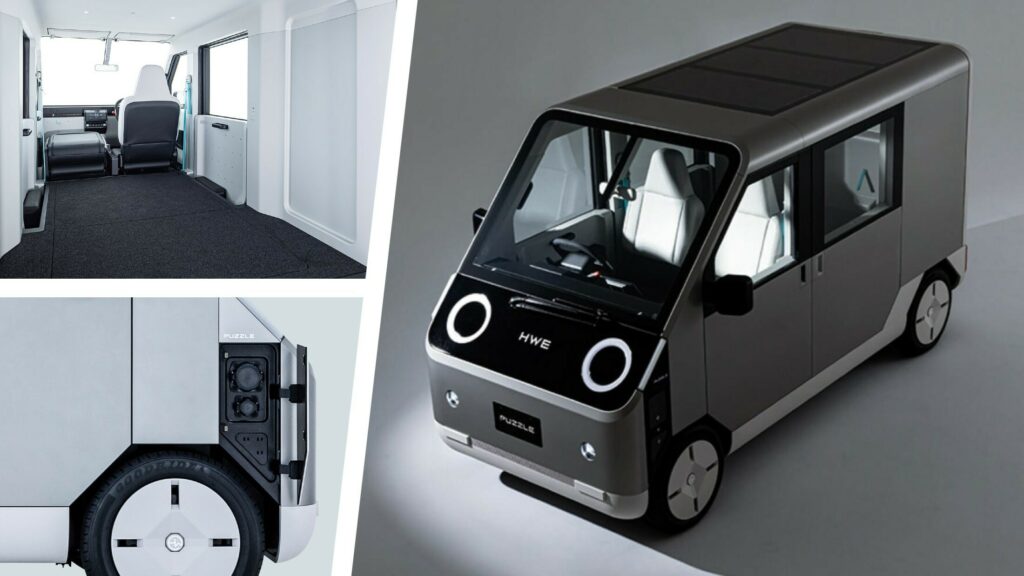The Japanese electric van may be small on the outside, but it offers ample interior space and advanced connectivity features
4 hours ago
 –>
–> 
–>
HW Electro, a new Japanese company aiming to become the nation’s first electric LCV (Light Commercial Vehicle) manufacturer, has unveiled a concept vehicle named the Puzzle. This tiny commercial van, featuring a design inspired by, well you guessed it, puzzles, is anticipated to make its production debut in 2025, with a strong focus on sustainability, connectivity, and social contribution.
After its concept debut at the Japan Mobility Show last month, the Puzzle has made its way to New York, where HW Electro confirmed its intentions to make the vehicle available in the North American market.
The LCV with the cute and cuddly face has a tiny footprint measuring just 3,395 mm (133.7 inches) long, 1,475 mm (58.1 inches) wide, and 1,920 mm (75.6 inches) tall with a 2,480 mm (97.6 inches) wheelbase. This makes it shorter than a Fiat 500, with its dimensions placing it in the Japanese kei car segment. Its boxy shape and flat surfaces allow some of the exterior panels to be interchangeable, reducing costs and waste.
advertisement scroll to continue
More: Toyota Kayoibako Is A Baby Van That’ll Make You Quit Your Job And Start A Mobile Business
The panels on the sides of the front end open up, revealing AC power supplies, USB ports, internet connectivity, and an emergency first aid kit, which are always accessible to the public. As part of its goal for “social contribution”, HWE hopes that its LCVs will assist people in case of emergencies, with their battery packs serving as power sources and solar panels on the roof for clean energy. Furthermore, there is a crowbar below the cargo floor which according to the company can be used to save people’s lives.
The HWE Puzzle is intended to be shared among multiple users, so the two-seater cabin is covered by pinboard-style surfaces, allowing each one to arrange the configuration based on their needs. The central touchscreen incorporates the latest connectivity technology and the MyHWE application which uses AI for delivery optimization, cargo management, and disaster support.
More importantly, the nearly cubic shape of the cargo space makes it ideal for filling it up with boxes. The electric powertrain limits the maximum loading capacity to 350 kg (771.6 lbs), although no more than that is usually needed for urban delivery vehicles.
While the company hasn’t provided detailed specifications for the Puzzle’s fully electric powertrain, Fleet Owner reports that it will feature a lithium iron phosphate battery, offering an electric range of 125 miles (201 km) on a single charge, which is in line with other electric kei cars from Japan.
More information about the HWE Puzzle is expected to follow closer to the market launch that is scheduled for early spring 2025. While in the US there are not many vehicles offering a similar size and functionality ratio, the HWE Puzzle will have a lot of competition in Japan where most major automakers have already presented fully electric versions of their kei vans.
[embedded content]
